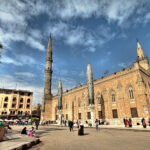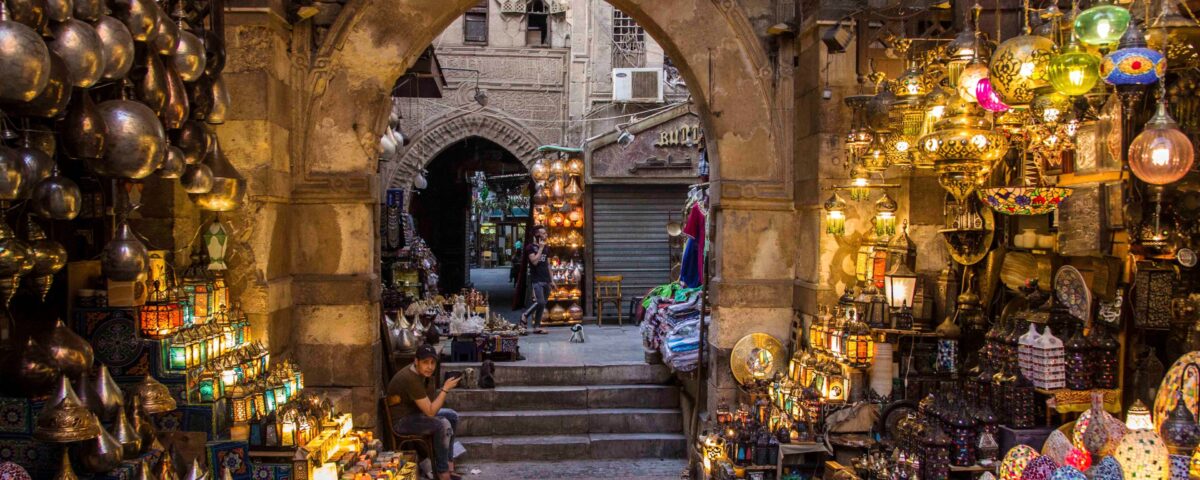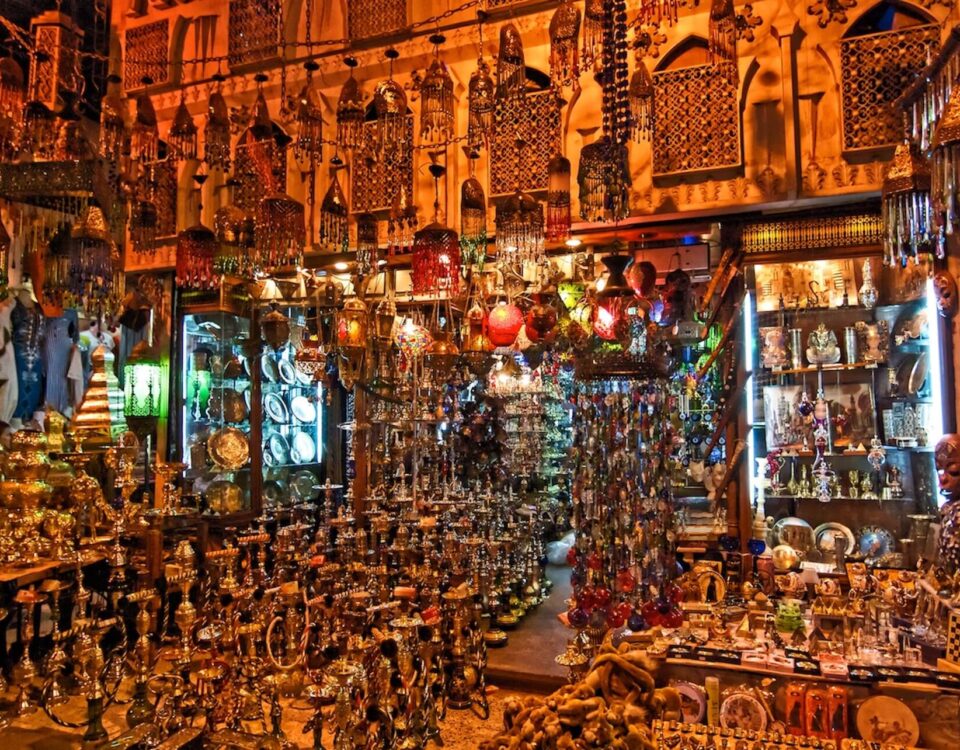
Top Attractions Near Khan el-Khalili You Shouldn’t Miss
November 4, 2025
Khan el-Khalili for Photographers: Capturing Cairo’s Timeless Market
November 5, 2025Nestled in the heart of Cairo’s historic Islamic district, Khan el-Khalili stands as a vibrant testament to Egypt’s rich cultural tapestry. This iconic bazaar, established in the 14th century, buzzes with life, where the air is thick with the scents of spices, the clang of hammers on metal, and the chatter of hagglers. At its core are the artisans of Khan el Khalili, skilled craftsmen who have preserved ancient techniques passed down through generations. These dedicated individuals breathe life into Egypt’s handcrafted heritage, creating exquisite pieces that blend tradition with timeless beauty. From intricate jewelry to ornate lanterns, their work not only sustains a living history but also draws visitors from around the globe eager to experience authentic Egyptian artistry.
The artisans of Khan el Khalili represent more than just vendors in a market; they are guardians of a legacy that dates back to the Mamluk era. In a world increasingly dominated by mass production, these craftspeople continue to hand-forge items using methods honed over centuries, ensuring that each piece tells a story of cultural resilience and creativity. As you wander the labyrinthine alleys, you’ll witness metalworkers shaping brass into delicate patterns, jewelers setting precious stones with precision, and weavers crafting textiles that echo Pharaonic designs. This article delves into the world of these remarkable artisans, exploring their history, crafts, and the enduring impact on Egypt’s cultural landscape. Whether you’re a traveler planning a visit or simply fascinated by global heritage, understanding the artisans of Khan el Khalili offers a window into the soul of Egypt.
The Rich History of Khan el-Khalili
Khan el-Khalili’s origins trace back to 1382, when Emir Djaharks el-Khalili, a prominent Mamluk prince, constructed a grand caravanserai—a resting place for traders—on the site of a former Fatimid palace and royal mausoleum known as Turbat az-Za’faraan, or the Saffron Tomb. This transformation marked the beginning of what would become one of the Middle East’s oldest and most famous bazaars. During the Mamluk period, the area flourished as a hub for commerce, attracting merchants from across the region who traded spices, textiles, and precious metals. By the Ottoman era, it had evolved into a bustling souk, often referred to as the “Turkish bazaar,” where guilds of artisans settled, establishing workshops that specialized in traditional crafts.
Over the centuries, the bazaar has weathered invasions, revolutions, and modernization. Sultan al-Ghuri in the early 16th century redeveloped parts of it, introducing stone gates and a more structured layout reminiscent of Ottoman bedestens—secure markets for valuable goods. Despite these changes, the essence remained: a place where artisans of Khan el Khalili could thrive. In the 19th and 20th centuries, as Egypt opened to Western influences, the market adapted, incorporating tourist-friendly souvenirs while maintaining its core of authentic handicrafts. Nobel laureate Naguib Mahfouz immortalized it in his novels, drawing inspiration from its streets for tales of Cairo life.
Today, bounded by al-Muizz Street to the west and the al-Hussein Mosque to the east, Khan el-Khalili spans a maze of alleys that integrate seamlessly with surrounding neighborhoods. Its history is not just architectural but human—the stories of families who have passed down trades like coppersmithing and jewelry making for generations. This enduring legacy underscores why the artisans of Khan el Khalili are pivotal to preserving Egypt’s intangible cultural heritage, recognized by UNESCO for its role in safeguarding traditional knowledge.
The Diverse Crafts of Khan el-Khalili Artisans
The true heartbeat of Khan el-Khalili lies in its workshops, where the artisans of Khan el Khalili transform raw materials into masterpieces. These skilled individuals specialize in a variety of trades, each rooted in Egypt’s ancient past yet adapted to contemporary tastes.
Metalwork and Brassware
One of the most prominent crafts is metalworking, particularly with brass and copper. Artisans hammer intricate designs into trays, lanterns, and hookahs, often incorporating Islamic geometric patterns or Pharaonic motifs. These pieces, glowing under the bazaar’s lights, are not mere decorations but functional art passed down through apprenticeships. Visitors can often watch craftsmen at work in hidden courtyards, tapping away to create items like ornate lamps that cast mesmerizing shadows. The adjoining goldsmiths’ souq remains vital for locals, where jewelers craft gold and silver pieces with filigree techniques dating back to antiquity.
Jewelry and Gemstone Crafting
Jewelry making is another cornerstone, with artisans of Khan el Khalili renowned for their silver and gold work embedded with semi-precious stones like turquoise and lapis lazuli. Inspired by ancient Egyptian symbols such as the Eye of Horus or scarabs, these pieces serve as protective amulets or elegant accessories. Craftsmen use traditional tools to engrave and set stones, ensuring each item is unique. The bazaar is also a source for hand-blown glass jewelry, blending colors in swirling patterns that reflect the Nile’s hues.
Textiles and Leather Goods
Textile artisans weave vibrant fabrics, including scarves, tapestries, and embroidered galabiyas (traditional robes). Using looms that echo those from Coptic times, they incorporate motifs from Islamic art and folklore. Nearby, leatherworkers craft bags, belts, and sandals from locally sourced hides, often dyed in rich earth tones and stamped with intricate designs. These crafts highlight the sustainable practices of the artisans, who repurpose materials to minimize waste.
Other Traditional Handicrafts
Beyond these, you’ll find woodcarvers creating inlaid boxes and chess sets, potters painting ceramics with floral patterns, and perfumers blending essential oils into scents reminiscent of ancient recipes. Papyrus art, depicting hieroglyphs and gods, and crystal carvings add to the diversity. Each artisan’s workshop is a microcosm of creativity, where skills are taught orally, preserving oral histories alongside the crafts themselves.
Cultural Significance and Modern Challenges
The artisans of Khan el Khalili play a crucial role in Egypt’s cultural identity, acting as bridges between past and present. Their work embodies the fusion of Pharaonic, Islamic, and Ottoman influences, making the bazaar a living museum. UNESCO has highlighted such markets for their contribution to intangible heritage, as crafts like these foster community pride and economic empowerment, especially for families in Cairo’s old quarters.
However, modernization poses challenges. Mass-produced imports undercut prices, and urbanization threatens workshop spaces. Many artisans struggle with tourism fluctuations, exacerbated by global events. Initiatives like government-sponsored guilds and eco-friendly adaptations help, but preserving authenticity requires support from visitors who value handmade over cheap replicas.
Visiting Khan el-Khalili: Tips for Travelers
For those eager to experience the artisans of Khan el Khalili firsthand, the bazaar is open daily, with evenings offering a magical ambiance under lit lanterns. Haggle respectfully—it’s part of the culture—and seek out workshops off the main paths for authentic interactions. Pair your visit with nearby sites like the al-Hussein Mosque or a tea at a historic café. Sustainable tourism means buying directly from artisans, supporting their livelihoods while taking home a piece of Egypt’s heritage.
FAQs
What is Khan el-Khalili famous for?
Khan el-Khalili is renowned for its historic bazaar atmosphere, traditional Egyptian crafts, and as a hub for artisans creating jewelry, metalwork, and textiles.
Who are the artisans of Khan el Khalili?
They are skilled craftsmen from local families who specialize in handmade goods, preserving ancient techniques in workshops throughout the bazaar.
When was Khan el-Khalili established?
It was founded in 1382 by Emir Djaharks el-Khalili during the Mamluk era.
What crafts can I find there?
Visitors can discover brassware, jewelry, leather goods, ceramics, and more, all handcrafted on-site.
Is it safe to visit Khan el-Khalili?
Yes, it’s a popular tourist spot, but stay aware of your belongings and avoid isolated areas at night.
How does Khan el-Khalili contribute to Egypt’s heritage?
It safeguards traditional crafts, supporting cultural preservation and local economies through artisan guilds.
Final Words
In the ever-evolving landscape of modern Egypt, the artisans of Khan el Khalili remain steadfast custodians of a priceless heritage. Their dedication ensures that the bazaar’s alleys continue to echo with the sounds of creation, inviting all to partake in a timeless journey. As you reflect on this exploration, consider visiting or supporting these crafts—it’s a way to keep Egypt’s handcrafted legacy alive for future generations.


